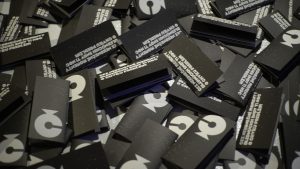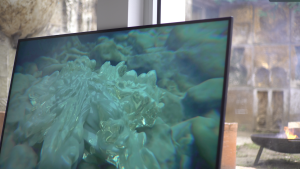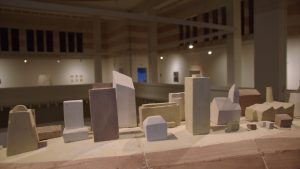Embed
Embed
Samostatná výstava vizuálneho umelca Kristiána Németha Oratio pro futuris melioribus/Modlitba za lepšiu budúcnosť prirodzene nadväzuje na intermediálne tendencie v jeho tvorbe, ktorá voľne prechádza od priamej inštitucionálnej kritiky k symbolickej rovine a všeobecným námetom. Autor dielami komunikuje témy súvisiace s telesnosťou, intímnym a traumatickým obsahom, sexuálnymi menšinami a mocenskými vzťahmi v kontexte katolíckej cirkvi.
Oratio pro futuris melioribus/Modlitba za lepšiu budúcnosť je hybridný výstavný projekt, ktorý selekciu Némethových emblematických diel vkladá do funkčného dialógu so skicami a maliarskou tvorbou Miloša Alexandra Bazovského (1899 – 1968), Ladislava Mednyánszkeho (1852 –1919) a Dominika Skuteckého (1849 – 1921) zo zbierok Liptovskej galérie P. M. Bohúňa. Na pozadí autorskej architektúry, ktorú vyhotovil Jozef Vančo z GUTENART., sledujeme aktualizáciu, rekontextualizáciu a vzájomnú komparáciu motívov a formálnych podobností. Némethov experiment a selektívny výskum spája minulosť so súčasnosťou, pričom cielene reaguje na aktuálnu politicko-spoločenskú situáciu akcelerovanú teroristickým útokom na Matúša Horvátha a Juraja Vankuliča v bratislavskej Teplárni.
The exhibition Oratio pro futuris melioribus (The prayer for a better future) by Kristián Németh naturally connects to the intermedial tendencies in his work. It seamlessly flows from a direct, institutional criticism to the symbolic aspect and general themes. The artist uses the art to express themes connected to physicality, intimate and traumatic content, sexual minorities, and the power relations within the context of the catholic church.
Oratio pro futuris melioribus (The prayer for a better future) is a hybrid exhibition project which places a selection of Németh’s emblematic artworks into a functional dialog with sketches and paintings from the Liptov Gallery of P.M Bohúň by Miloš Alexander Bazovský (1899-1968), Ladislav Mednyánszky (1852-1919), and Dominik Skutecký (1849-1921). On the background of artistic architecture made by Jozef Vančo of Gutenart, we can watch actualization, recontextualization, and mutual comparison of motives and formal details. Németh’s experiment and selective research connect the past with the present. At the same time, it directly reacts to the current political-social situation accelerated by a terrorist attack that resulted in the murder of Matúš Horváth and Juraj Vankulič in Bratislava’s Tepláreň club.















